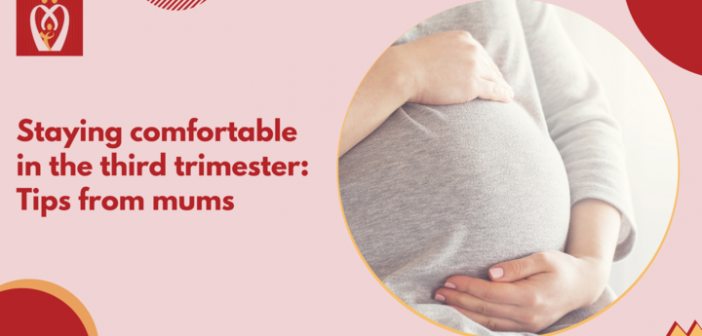For a pregnant woman, the third trimester is an exhilarating period. You and your kid are both growing at an astronomical rate, and it’s a good thing.
Even if you’re eagerly anticipating the arrival of your child, the third trimester may be a trying time for many women.
If you’re a pregnant woman in the third trimester, these are five things to watch out for and a few tips to help with each.
Skincare
Your skin may undergo the following changes during the third trimester:
- The presence of abdominal stretch marks
- Discolorations of the skin, such as black spots on the face or a dark line running from the bottom of the navel.
- Acne
- As hormone levels rise near the end of pregnancy, other skin changes are frequent.
There are a few things you can do throughout the latter months of your pregnancy to maintain your skin in good condition, such as using a gentle cleanser and moisturizing regularly, adding hydration to dry, irritated areas using lotions, limiting your time in the sun, keep your skin toned by eating enough of vitamin C-rich foods.
Heartburn
The muscle that separates your oesophagus from your stomach relaxes during pregnancy. When this occurs, the contents of your stomach might back up into your oesophagus, resulting in heartburn. It’s no surprise that so many pregnant women suffer from heartburn because of the strain exerted by the expanding baby.
Reduce heartburn in the third trimester of pregnancy by following these simple tips.
- Limit your intake of high-fat, spicy, and caffeinated meals
- Eat more often and in smaller portions
Swelling of the ankle or leg
Leg edema is common in pregnant women because of the increased blood flow to the placenta and fetus. Fluid accumulation in the legs may be caused by the uterus exerting pressure on the major veins that drain blood from the lower part of the body.
How to alleviate swelling in the ankles and legs during pregnant:
- Water or non-caffeinated drinks should be consumed on a daily basis
- Foods with a high salt content should be avoided
- Put your feet up for a moment of peace and quiet
- In order to avoid injury, avoid crossing your legs.
- Do not wear leggings with a tight elastic band at the knee or thigh
- You should sleep on your left side, rather than your right
- When you’re standing or sitting, rotate your feet, stretch, and bend your knees many times a day to help your body’s blood flow properly.
Haemorrhoids and Varicose veins
Pregnancy may lead to varicose veins and haemorrhoids on the lower legs because of the increased blood flow. Despite the fact that these issues are widespread, they may cause more than simply pain.
Avoiding varicose veins and haemorrhoids while pregnant is simple:
- Consume plenty of fibre-rich foods including fruits, vegetables, and whole grains to keep constipation at bay.
- Avoid putting undue pressure on the bowels.
- Soothe your haemorrhoids with an after-bowel-movement sitz bath.
- Keep hydrated and steer clear of caffeine at all costs.
- Standing or sitting for lengthy periods of time is not recommended.
Inability to sleep
During the third trimester of pregnancy, some women have difficulty falling asleep or staying asleep. Worrying about the baby, the delivery, and your new role as a mother may make it difficult to unwind. When it comes to the first few sleepless weeks of motherhood, some mothers see this as practice.
However, getting enough sleep is critical, particularly if you’re expecting a new member of your family soon.
When you’re pregnant, here’s how to obtain a better night’s sleep:
- Before going to sleep, take a warm shower
- Avoiding caffeine is a good rule of thumb
- Do not engage in strenuous physical activity in the late afternoon
- Pillows may help you relax (or try sleeping in a recliner to be more comfortable)




